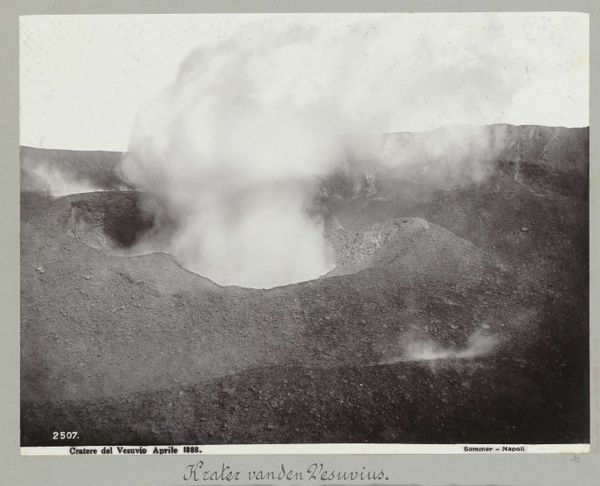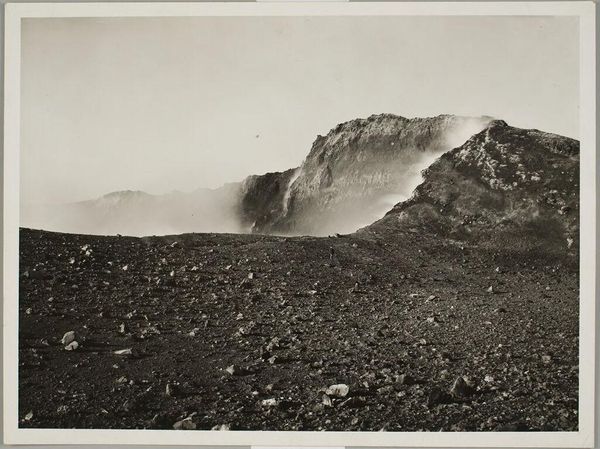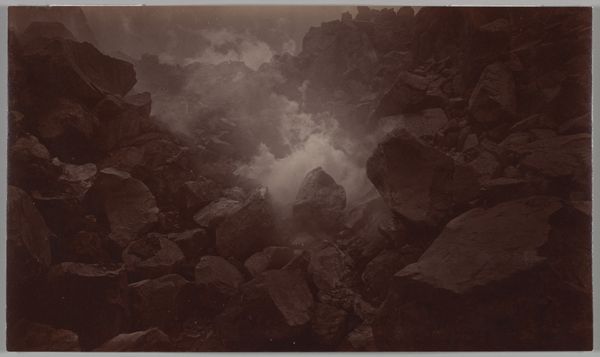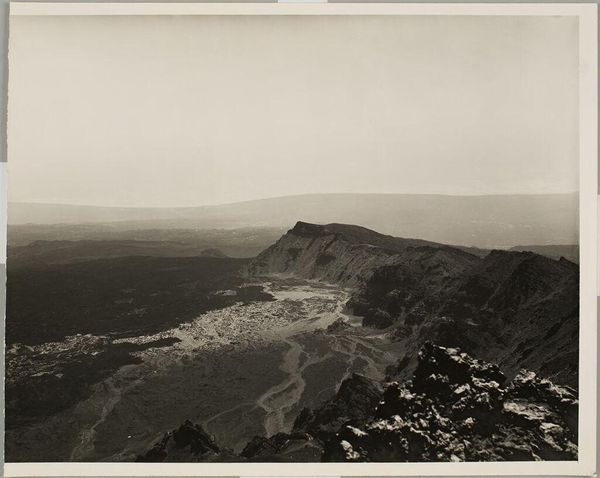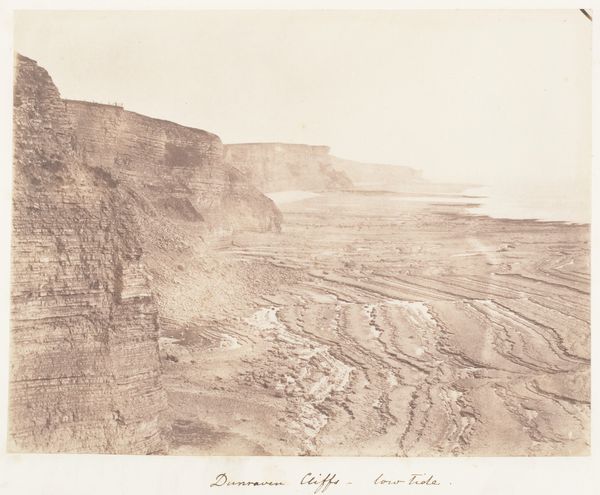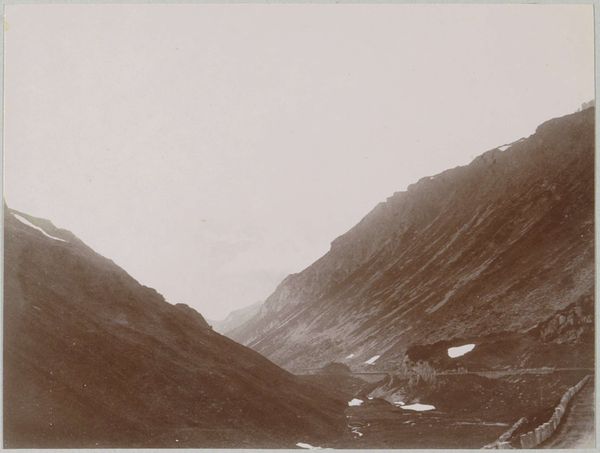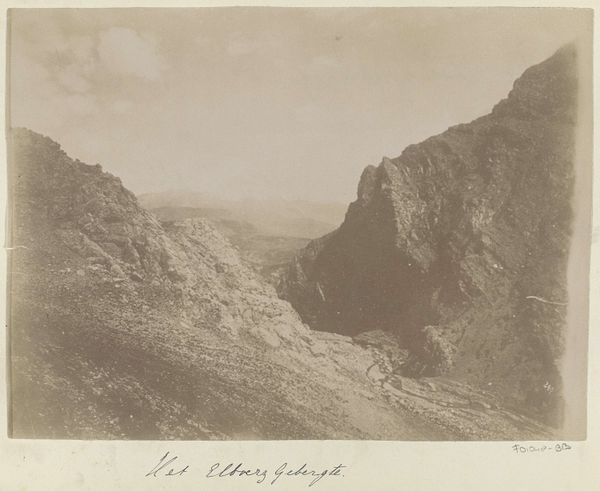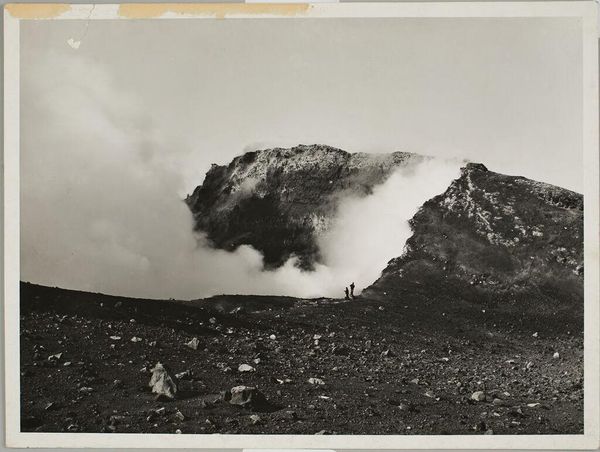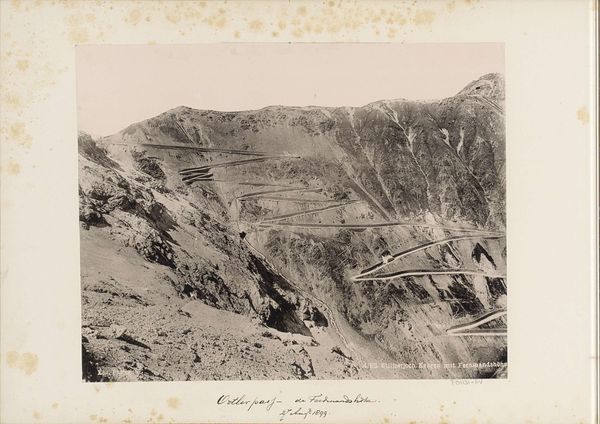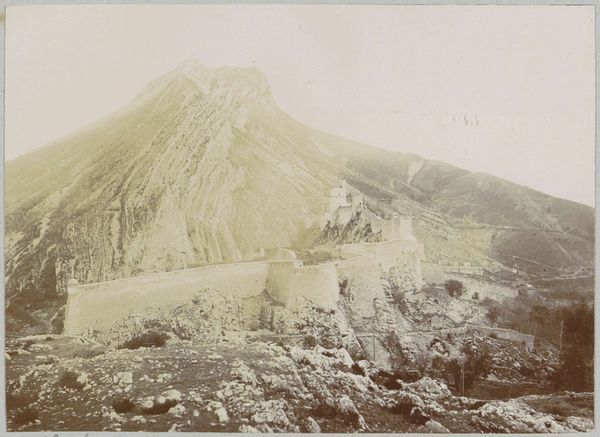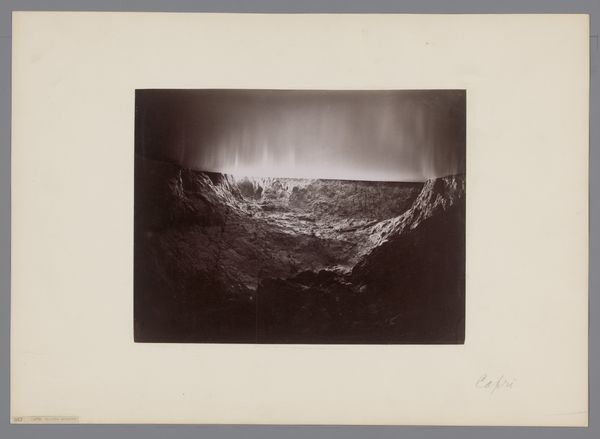
Gezicht op de grote krater van de Sibayakvulkaan en een zwavelmeer van de Sinabungvulkaan (links) op Sumatra before 1898
0:00
0:00
carljkleingrothe
Rijksmuseum
print, photography
# print
#
landscape
#
photography
#
watercolor
Dimensions: height 179 mm, width 285 mm
Copyright: Rijks Museum: Open Domain
Curator: Here we have a landscape print dating to before 1898 by Carl J. Kleingrothe. Its full title is, “View of the large crater of the Sibayak volcano and a sulphur lake of the Sinabung volcano (left) in Sumatra." Editor: Bleak, isn't it? All monochromatic grays and whites. The scene evokes a desolate, almost lunar landscape, despite the implication of earthly volcanoes. The composition pulls you downward into the crater's depths. Curator: Yes, Kleingrothe has utilized stark contrasts in tonality and texture to emphasize the immensity of the volcanic crater. Notice how the plumes of smoke are rendered, creating a visual interplay with the jagged rocks. Editor: I find it fascinating how photography like this—captured in a colonial context—participated in a scientific visual inventory of a conquered land. It speaks to how image-making was embedded within political and economic control. Curator: Indeed. One can also analyze the image as a product of artistic endeavor. Observe the distribution of light and shadow which contributes to a dramatic aesthetic, beyond merely documentation. The way the horizon is framed creates a distinct spatial awareness. Editor: While formally sound, for me the choice to render this in black and white raises questions. How does the absence of color influence our interpretation of an environment likely teeming with visual complexity? Is there a romanticized element of the 'unknown' at play here? Curator: It simplifies and clarifies form. In the absence of color, the structural relationships of the volcanoes themselves become the focal point of visual attention and convey symbolic meanings. Editor: And consider this print’s reception in Europe. How did viewers consume these representations of ‘exotic’ locales, reinforcing or challenging prevailing notions? This piece acts as a historical record embedded in larger cultural power dynamics. Curator: These converging approaches offer a broader appreciation. Focusing solely on the political dims how such a print speaks through tonal arrangement and structural design. Editor: And conversely, neglecting the historical conditions during production risks diminishing the importance that these prints may represent and its power relationship over its time.
Comments
No comments
Be the first to comment and join the conversation on the ultimate creative platform.

